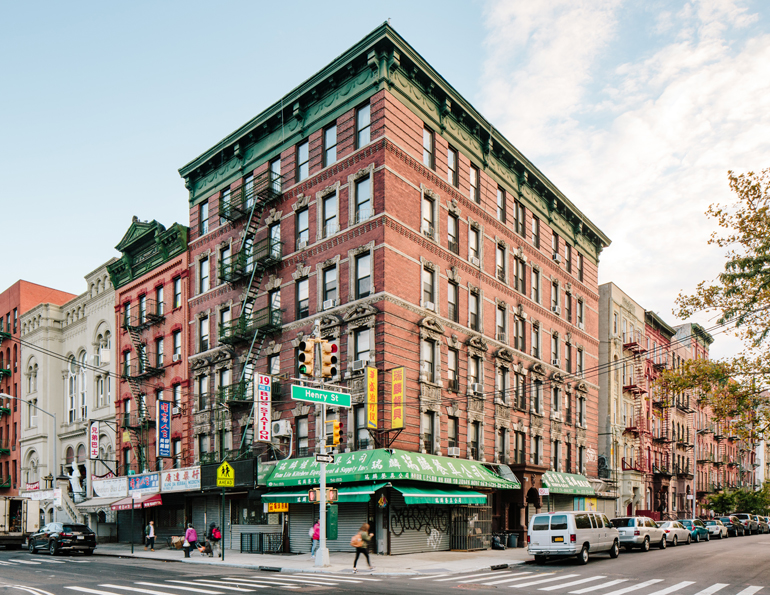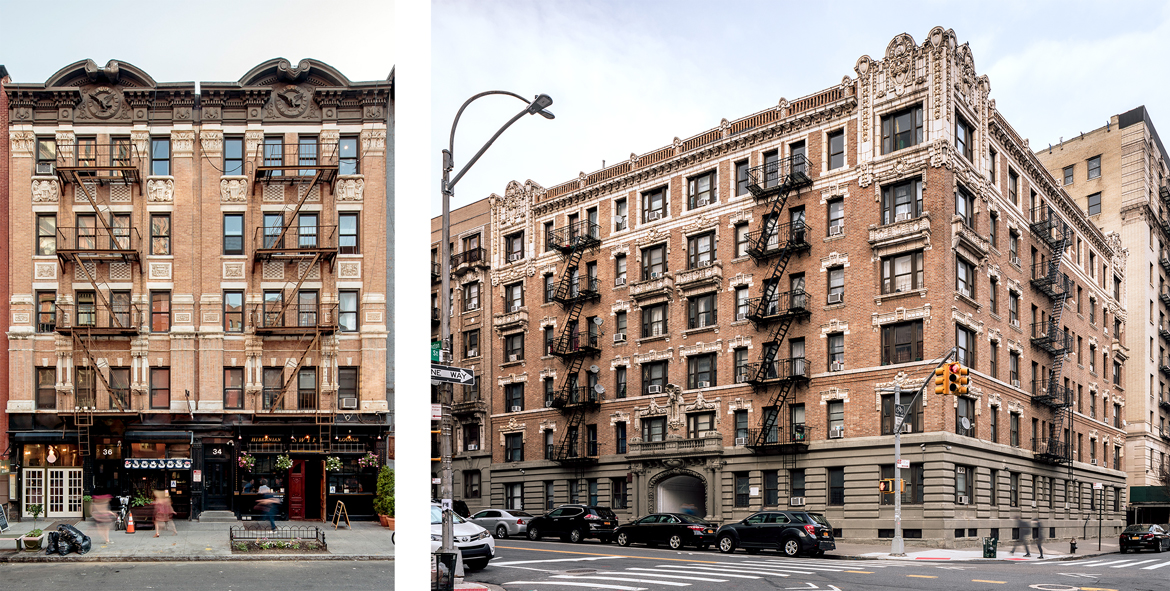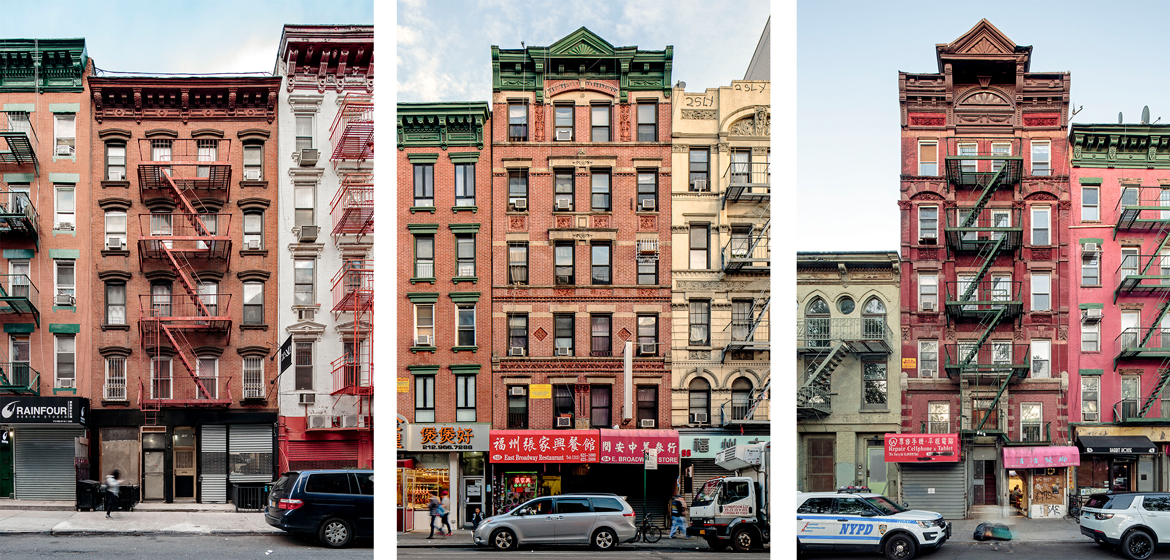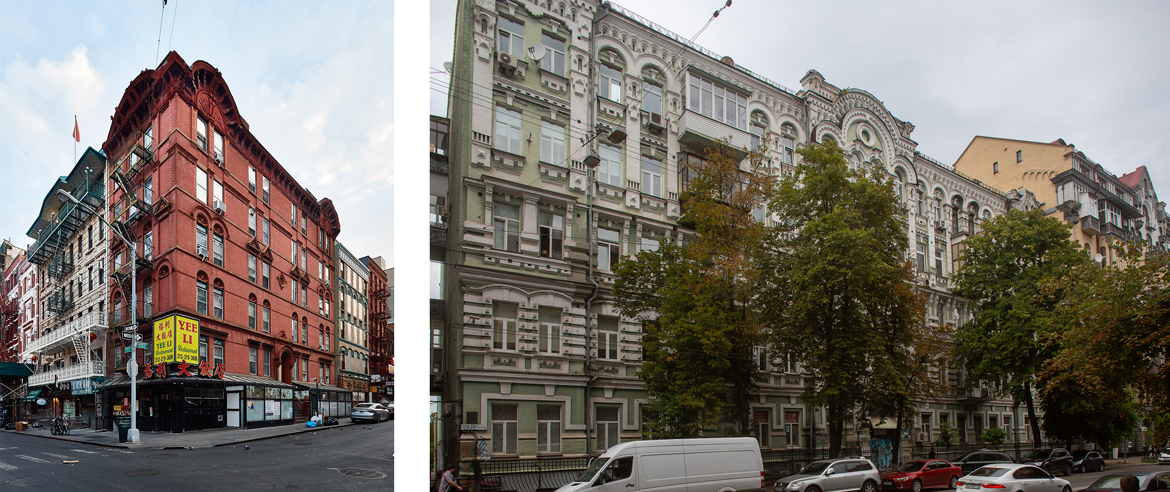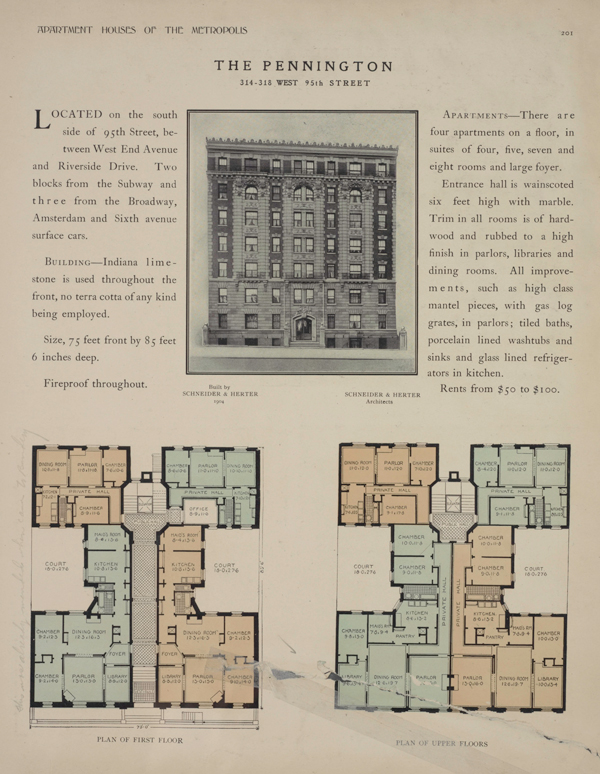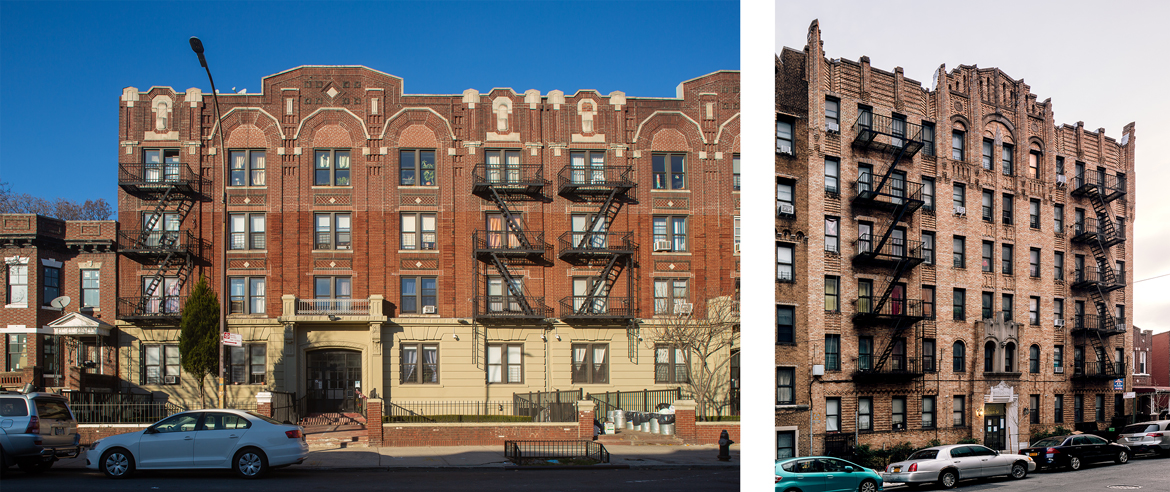
We are celebrating 15 years — and counting — of stories that are deeply researched and deeply felt, that build a historical record of what the city has been.
We are celebrating 15 years — and counting — of stories that are deeply researched and deeply felt, that build a historical record of what the city has been.
Nativism runs amok in the US, from detained children and deported parents, to the suspension of work visas and the latest attempt to upend the status of international students at colleges and universities. Beyond the respect of fundamental human rights, the constitutive role of people of all national origins to the thriving of American cities and suburbs should hardly need reminding. Yet here we are. Many of those contributions are so integral to the warp and weft of the urban fabric that they go unnoticed. One local case in point: New York City’s tenement landscape. Home to millions of newcomers to the city, by the late 19th century, the buildings were also designed and built by them. New York City’s housing vernacular owes its distinctive ornament — and more — to architects and developers from cities like Berlin, Vilnius, and Kyiv. While Anglo reformers painted tenements with a broad brush of degeneracy, architects brought their training and values to imbue their compatriots’ dwellings with urbanity and dignity, and transformed the city’s working- and middle-class housing. Historian Zachary Violette follows the transnational history of the tenement to show these familiar buildings in a new light.
New York City as we know it took shape in the period between the Civil War and the Great Depression, when miles upon miles of tenements and average apartment houses sprang up from the Lower East Side through the outer boroughs to house the working and lower-middle classes. Since they make up so much of the fabric of New York’s vernacular landscape, tenements are easily overlooked. Long-maligned, these buildings have also been tarnished by their association with the notorious living conditions made famous by photographer Jacob Riis and other reformers. Tenements have long been seen as unsafe, poorly lit, and unsanitary housing from an exploitative era when immigrant workers’ wages provided for little but squalor. But while Riis’ famous images spoke eloquently to the economic disparities of this period, many of the landscapes he brought to light were disappearing at just the moment they were being captured. By the 1880s, the “slums” of New York City were rapidly being replaced by scores of new, dense buildings with much higher living standards. The vast majority of these buildings were not just intended to house the city’s rapidly growing immigrant groups, but were built and, in most cases, designed by them as well. Intimately tied to the era’s patterns of mass migration, these turn-of-the-century tenement buildings tell an important story about the diversity of people and outlooks that formed the city.
The builders of the city’s housing were almost exclusively small-scale entrepreneurs, and usually recent immigrants: Italians, Germans, and Eastern European Jews. The architects these builders turned to were frequently also immigrants, or their children; some were also trained abroad. These new arrivals brought with them new concepts of what modern city life meant — ideas shaped in places like Berlin, Vilnius, and Kyiv, and therefore more closely attuned to the tastes, desires, and aspirations of New York City’s growing immigrant working class.
Steeped in European architecture and urbanism, these builders also manifested a fundamentally different view of how best to house the city’s rapidly growing population than the reformers who dominated the discourse on American housing: well-intentioned, but privileged individuals deeply concerned about the living conditions of the poor. These reformers, like many comfortable Americans, saw multifamily housing as a bad omen of “old-world” misery, something to be minimized, not elaborated and improved upon. But the builders and architects who shaped and defined New York’s working-class neighborhoods — grounded in a continental European mindset — evinced a familiarity, comfort, and even pride in developing advanced forms of multifamily housing. They expressed this through the liberal use of architectural ornament, applied to increasingly commodious tenements. With the streets of Central and Eastern Europe cities as a reference point, they appropriated strategies of ornamentation and aggrandizement — common to those places but long associated with elite power — and made them available to a wider audience. Later, the same builders would employ many of the same strategies to apartment houses in formerly suburban outer boroughs. To the immigrant who built a tenement (or, later, an apartment house), the building, highly decorated with meaningful forms, was a fundamental sign of progress, an affirmation of the emancipatory power of the American system, and an important manifestation of these new arrivals’ ability to navigate that system in a way that benefited themselves and their communities.
Emigrating separately in the early 1880s, Henry, Peter, and Frank Herter were among the scores of German-trained architects working in New York City during this period. Born in Bonn at midcentury, all three brothers followed their father into the profession of architecture. Peter Herter was educated at Berlin’s Bauakademie, one of the most prestigious schools of architecture and construction in Central Europe (likely his brothers were as well). There, the architectural theorist Karl Bötticher emphasized the differentiation of construction and decoration, exploiting new structural methods and decorative techniques — particularly the use of iron and terra cotta — while employing loosely classical forms. Bötticher’s students helped bring an elaborate mode of building to the streets of Central Europe in the second half of the 19th century.
As cities like Berlin, Budapest, and Łódź boomed, their streets became filled with large apartment houses designed under the influence of the Bauakademie. In their massing, composition, and relationship to the street and street wall, these buildings reflected a tradition of urban architecture that derived from the palazzo of Renaissance Italy. Built to house economically diverse residents from the working to upper-middle classes — along with commercial and residential uses, all sharing the same elaborate entrance and façade — they were frequently dubbed “rental palaces.”
The rental palace was perhaps most closely identified with the city of Berlin. The German metropolis was said to be the largest tenement city in the world, rivaled in scale only by New York. Berlin’s speculatively built rental barracks, mietskaserne, were usually long, narrow buildings of flats of two or more rooms, where the wealthiest residents would occupy the largest and best apartments facing the street, while other, more modest accommodations — as well as shops and small factories — could be reached through a series of courtyards. The façades were rich with idiosyncratic details rendered in stucco, often incorporating human figures. This façade ornamentation came to define the built landscape of industrialized Central and Eastern Europe.
The young Hungarian architect Ödön Lechner was Herter’s classmate in Berlin. Destined to be one of the most important architects of 19th-century Central Europe, his early works consisted mostly of elaborate stucco facades for Budapest apartment buildings. Hundreds of tenements with similar façades lined the streets of Łódź as well. Housing workers at the new industrial boomtown’s massive textile factories, the rental palaces of Łódź were largely built by German and Jewish entrepreneurs who used ornament as a sign of modernity and cosmopolitanism. Władysław Reymont’s 1899 novel The Promised Land depicted life in the city at the turn of the 20th century, where the streetscape was a “veritable rubbish heap of every possible style, over-loaded with stone balconies, caryatids, ostentatious façades, roof balustrades.”
Given the lavish street façades of the multifamily housing they were familiar with in Europe, it is not surprising that the Herters recoiled at what was on offer in New York. In an 1892 essay, Peter Herter described the housing he found on the Lower East Side as “gloomy,” “unhealthy,” and beneath the dignity of the new communities settling there. The “eastsiders,” he was sure, demanded better. He and his brothers were to make a growing business of demonstrating and accommodating those rising demands.
The oldest of the three brothers, and the first to reach in New York, Henry Herter began experimenting with new façade treatments shortly after his arrival. While working in the office of August H. Blankenstein, a fellow German, he designed a series of tenements for developer Solomon Jacobs, also born in Germany. The first building Herter designed for Jacobs in 1885 had a modest façade of the kind common since the 1850s. Later that year, for a new building on East Broadway, he introduced a bevy of terra cotta and sheet metal ornament. Jacobs seems to have embraced Herter’s aesthetic experimentation: A year later, Herter gave another Eldridge Street tenement an even more elaborate façade. Adapting the influence of the Bauakademie to new American means of production, Herter used brick piers and terra cotta spandrel. Instead of the stucco of his European influences, however, this ornament was crafted with industrially produced material, newly affordable to tenement builders. Emulated by others in the close-knit community of tenement designers, this pattern quickly became one of the most common tenement designs seen on the streets of New York. Henry Herter soon went into partnership with Ernest Schneider, and for the remainder of the 19th century, Schneider & Herter was among the most prolific housing designers in the city.
Peter and Frank Herter found their most important clients among the community of the Eldridge Street Synagogue. The brothers were commissioned to design the temple only two years after their arrival in New York: a clear indication of the esteem to which their European training was held. Shortly after their designs for the synagogue were revealed, the Herter brothers began receiving numerous commissions for tenements with roomier apartments and façades that resembled the new synagogue. Sender Jarmulowsky, president of the congregation and an important immigrant financier whose bank played a central role in the widespread construction of new tenements, was among the Herters’ clients. By the end of the 1880s, Herter Brothers, Architects was a modern firm employing at least a dozen draftsmen, supervisors, and support staff. The go-to firm for the design of new housing in New York City, along with Schneider and Herter, they radically reshaped the appearance of many streets in Lower Manhattan and helped to raise expectations for the city’s housing.
The Eldridge Street Synagogue and the tenements the Herter brothers designed for its leaders featured elaborate geometric ornament. In Europe, the style known as Moorish Revival was thought to be a “specifically Jewish” one — the standard for ambitious synagogues like Berlin’s Oranienburger Strasse, whose prominent dome was visible from the Bauakademie while Herter was a student there. Yet the connection to actual Moorish architecture is tenuous at best. More likely precedents can be found in cities like Vilnius, Kyiv, and St. Petersburg, where apartment buildings were built with a distinctive, complex façade type finished with a grid-like pressed brick façade, enlivened with terra cotta or cast stone ornament.
Few architects in New York were from this region before the turn of the 20th century, but a large portion of tenement builders were. In 1888, Herter Brothers designed two tenements for Vilnius native Joel Hyams with pressed buff brick, brickwork details, and cast concrete panels closely matching work seen in the builder’s hometown. These buildings were originally topped by 16-foot, horseshoe-shaped pediments — a Herter trademark. Although made of sheet metal, these pediments reflect the flamboyance and bombast of many Eastern European cities’ architecture. Herter’s work is similar, in particular, to the assertively divided brick façades of Kyiv’s tenements, with their articulated piers, pilasters, and moldings. A great number of these buildings featured non-Western motifs, with a distinctive preference for Neo-Byzantine and Russian Revival styles. For New York tenement builders and architects, who believed they had a similar aesthetic responsibility toward the streetscape, these buildings served as an important precedent.
Immigrant builders and architects worked in long-settled downtown neighborhoods, constrained to 25-foot lots intended for single-family row houses. While their tenements’ façades shared characteristics with their European counterparts, in other ways they were unlike the wide rental palaces. This changed in the first decades of the 20th century, when large numbers of builders and architects who had previously worked on Downtown Manhattan tenements turned their attention to larger apartment buildings on the metropolitan periphery, where larger lots allowed for more generous planning. In Washington Heights, swaths of the South and West Bronx, and Flatbush and Williamsburg in Brooklyn, among other neighborhoods, they built for more diverse classes of residents demanding an ever-higher standard of living.
These buildings provided improved conditions not only in their exterior appearance but also interior amenities. Apartments featured a number of specialized rooms — parlors, dining rooms, and private hallways — and technological amenities like full bathrooms, water heaters, call bells, dumbwaiters, and eventually elevators. By the early 20th century, apartment houses designed and developed by Schneider & Herter could be found in the Upper West Side and Brooklyn Heights. While the apartment house gradually became a more accepted part of American life — and their residents were increasingly both assimilating to and altering American culture — a large majority of their builders and architects were still immigrants whose images of progress in the United States remained grounded in lessons learned in Europe.
The progressive eclecticism of smaller New York apartment buildings in the first decades of the 20th century shares a number of architectural forms with the contemporary European apartment house. With the great boom in apartment construction following World War I, European trends became common, such as broad, shaped parapets with an admixture of geometric and classical ornament, and tapestry brick pattern work. These stylistic innovations — called “moderne” when they first emerged — reflected design trends that had appeared in Eastern Europe in the previous decades. Even the interest in nominally Tudor revival forms had a distinct parallel in the mixed materials, “archaic” handling of surfaces, and complex (if often simulated) rooflines that were common in Berlin and nearby cities in the years before World War I. Finally, the move toward a more streamlined, but still ornamental form of Art Deco — which relied heavily on patterned brick work — is closely connected not only to contemporary European movements, but also older traditions of patterned brick façades.
The profound changes over the next years brought to an end a seven-decade period in which immigrant builders and architects played a vital role in reshaping the city. The end of mass immigration, following nativist quota policies put in place during the mid-1920s, put a stop to the city’s rapid growth. At the same time, new modernist ideas from Europe changed the status of ornament in architecture. Finally, the New Deal-era housing programs and postwar public housing took on increasing prominence in housing the working class and poor. With these projects, increasingly based on the ideas of a newly professionalizing field of housing design and development, expectations of living standards continued to evolve. The buildings of the previous half century came to be seen as obsolete, substandard, even a shameful episode of housing history. Yet in the easily overlooked details of their street façades, tenements demonstrate important truths about the nature of New York’s architecture. The city’s streetscape, like its culture, has long been shaped not only by the wealthy and powerful who usually dominate our attention, but by the decisions of numerous individuals, with their diverse priorities and varying ideas about how to make a city. In this way, the vernacular landscape of New York reflects the cosmopolitan nature of its people.
The views expressed here are those of the authors only and do not reflect the position of The Architectural League of New York.
